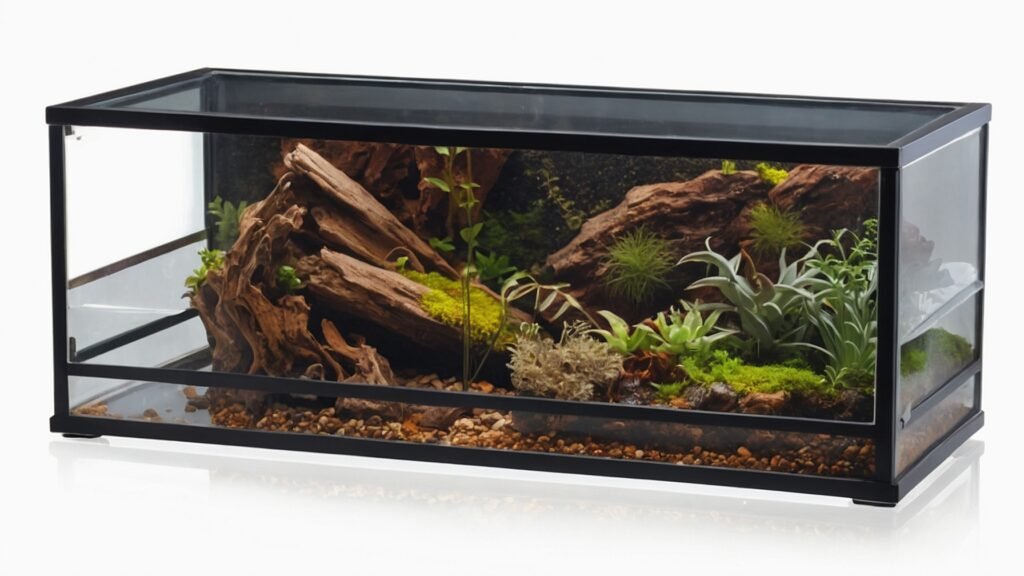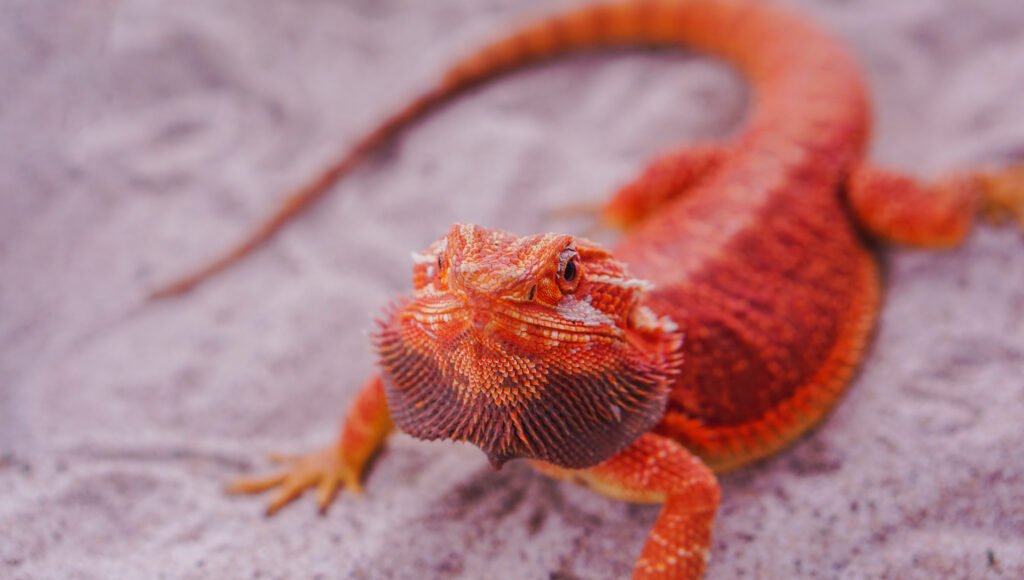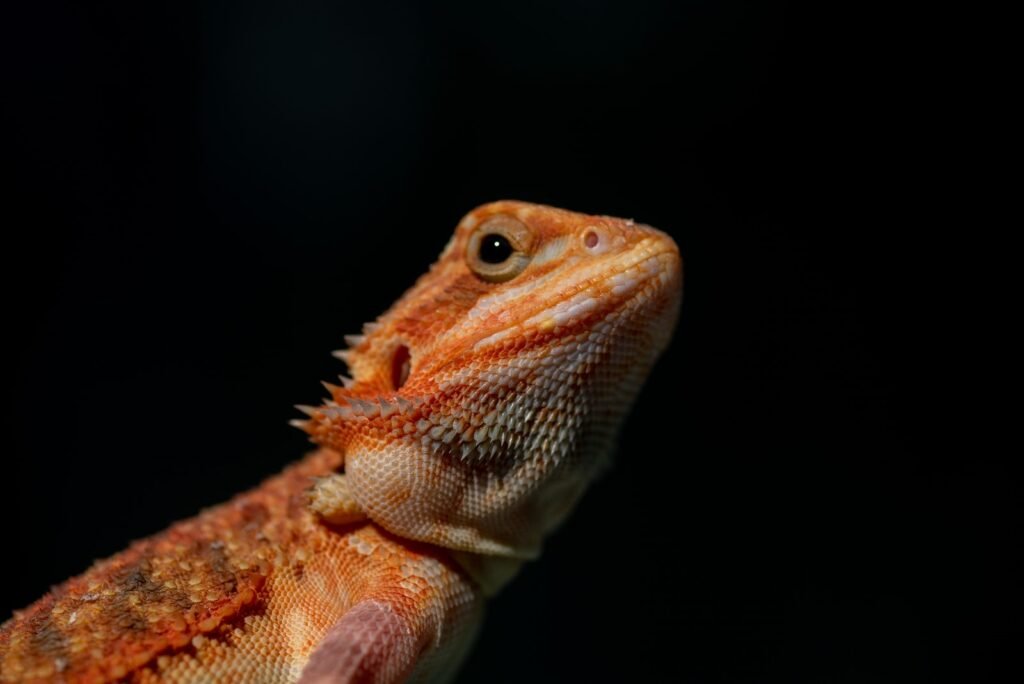Welcome to the exciting world of bearded dragons, where every owner’s journey begins with creating a comfortable and stimulating environment for their scaly companion. There’s a lot to discuss about bearded dragon care basics. Keep reading to find out essential information about housing, substrate, temperature, lighting, and handling to ensure your bearded dragon thrives.

Housing Requirements and Habitat Setup
A well-designed habitat is crucial for your bearded dragon’s health and happiness. Start with a sizeable terrarium—a minimum of a 40-gallon tank for juveniles and 75 gallons for adults to provide ample space for exercise and exploration. A secure lid is essential to prevent any adventurous escape attempts, while still ensuring adequate ventilation.
Incorporate a variety of climbing structures and hideaways to mimic the natural environment of these semi-arboreal lizards. Platforms at varying heights allow your bearded dragon to regulate their temperature by moving closer or further from the heat source. Remember, your bearded dragon’s habitat is not just a cage; it’s their kingdom, where they should feel both stimulated and secure.
Substrate Options

Choosing the right substrate is more than just aesthetics; it’s about safety and hygiene. Steer clear of sand and other loose substrates to avoid the risk of impaction—a common health issue in bearded dragons. Instead, opt for non-particle options like reptile carpet, ceramic tiles, or specially designed terrarium liners that are easy to clean and maintain. These non-particle substrates provide a firm footing, reduce the chance of accidental ingestion, and are straightforward to replace during cleaning routines.
Temperature and Lighting Needs
Bearded dragons are ectothermic creatures, relying on external heat sources to regulate their body temperature. Establish a thermal gradient in your tank with a basking area between 95-110°F (35°- 45°C) and a cooler zone around 80-90°F (27°-35°C). Nighttime temperatures should not drop below 65°F (18°C) to prevent stress. Use high-quality thermometers to monitor these zones accurately.
Equally important is lighting—your bearded buddy requires UVB lighting to metabolize calcium and prevent metabolic bone disease. Invest in a full-spectrum UVB bulb, ensuring it covers at least two-thirds of the tank’s length and replace it every six months to maintain its efficacy.
Handling and Taming Tips
Patience is your ally when taming your bearded dragon. Start by allowing your pet to adjust to its new surroundings. Gradually introduce your hand into the terrarium, offering treats and gentle pets. Consistency is key; handle your bearded dragon regularly, but limit sessions to 15 minutes to avoid overstressing them. Never grab them from above, as this mimics a predator’s approach—instead, scoop them up gently from below.
Remember, a tamed bearded dragon is a delightful companion, often showing affection and enjoying interactions with their human counterparts.
For a more in-depth look, check Bearded Dragon Habitat Setup – Substrate, Temperature & Lighting and Bearded Dragon Diet, Nutrition, Health and Wellness articles.
Conclusion
Caring for a bearded dragon is a rewarding experience that requires attention to detail. With the right habitat, substrate, temperature, lighting, and handling practices, you’ll set the stage for a healthy, contented pet whose personality can truly shine. Embrace these care basics, and you’ll be well on your way to becoming an expert in bearded dragon husbandry.



